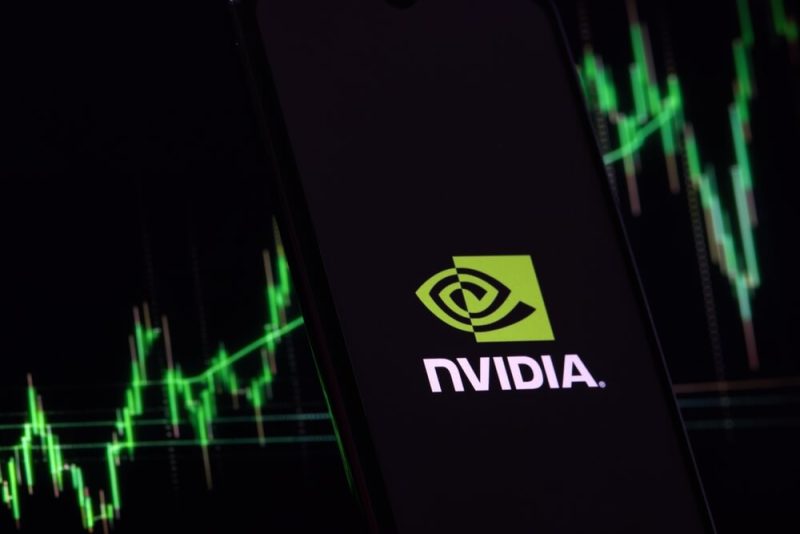
Nvidia’s AI Domination: Stock Split Secrets
Quick Look:
- Nvidia’s Market Position: Nvidia’s valuation nears $3 trillion, making it the third-largest company globally, driven by its dominance in AI chip technology.
- Stock Split: Nvidia’s recent 10-1 stock split reduced share prices from $1,200 to around $130, increasing accessibility for individual investors without altering intrinsic value.
- Competitive Edge: Nvidia holds approximately 80% market share in AI chips, outpacing rivals like Intel and AMD in technological innovation.
The market’s infatuation with artificial intelligence (AI) has propelled Nvidia to unprecedented heights. With a valuation nearing $3 trillion, Nvidia stands as the third-largest company globally, underscoring its pivotal role in the AI revolution. This semiconductor giant’s hardware is the backbone of technologies that many believe will shape the future, and its stock performance reflects this optimism.
The Powerhouse Behind AI Chips
Nvidia has cemented its position as the leading provider of AI chips, a critical component for advanced computing technologies. Since the public release of ChatGPT-3, Nvidia’s stock has surged nearly 700%, peaking above $1,200 per share last week. This meteoric rise highlights the market’s enthusiasm for AI and Nvidia’s dominant role within it.
However, shares are now trading around $130. This significant drop might initially suggest a drastic decline in the company’s fortunes, but the reality is quite different. Nvidia’s stock underwent a 10-1 split, meaning shareholders now own ten times more shares, each valued at a tenth of the pre-split price. This move, primarily cosmetic, does not alter the intrinsic value of investors’ holdings but has profound implications for market accessibility. A price of $130 per share is far more approachable for individual investors than $1,200, potentially broadening NVDA’s investor base.
Implications of the Stock Split
The stock split, while not affecting the fundamental value of Nvidia, has strategic benefits. Lower share prices make stocks more accessible to smaller investors, potentially increasing demand. Should Nvidia’s stock rise to $1,200 again, it would represent a tenfold increase from current levels, pushing the company’s market cap towards an almost unimaginable $30 trillion. Achieving such growth when already positioned as the third-largest company in the world is an extraordinary challenge, yet Nvidia’s history of innovation and market leadership suggests it is not beyond reach.
Nvidia’s near-monopoly on the AI chip market is a significant competitive advantage. With approximately 80% market share, it has set a high bar for rivals like Intel and Advanced Micro Devices, who are struggling to match NVDA’s technological prowess. Despite their efforts, these competitors have yet to produce chips that rival Nvidia’s offerings in the eyes of consumers and industry experts.
Nvidia’s AI Reign Challenged by Tech Giants’ Chip Ambitions
While traditional competitors struggle to catch up, Nvidia faces potential threats from an unexpected quarter: its customers. Tech giants like Alphabet, Microsoft, and Amazon are investing heavily in their own chipmaking capabilities. These companies aim to reduce their dependency on external suppliers like Nvidia by developing in-house solutions. This trend poses a significant challenge for NVDA, which must continue to innovate rapidly and offer competitively priced products to maintain its market dominance.
Staying ahead in the fiercely competitive tech industry requires more than just maintaining current capabilities. Nvidia must push the boundaries of what is possible with AI chips, constantly improving performance, efficiency, and cost-effectiveness. The company’s ability to innovate will be tested as it strives to outpace not only its traditional rivals but also the world’s most forward-thinking technology companies.
Nvidia’s journey is a testament to its pivotal role in the AI industry and its remarkable ability to drive technological advancements. The recent stock split makes its shares more accessible, potentially increasing investor interest. However, maintaining its leadership position will require relentless innovation and strategic agility, especially as competitors intensify their efforts. NVDA’s future remains bright, but the path forward is fraught with challenges that will test the company’s mettle in the ever-evolving tech landscape.
The post Nvidia’s AI Domination: Stock Split Secrets appeared first on FinanceBrokerage.

































